Welcome to the landscape photography blog by Chuck Derus. Thanks for looking and for your comments!
The Wonder Theatre of the World
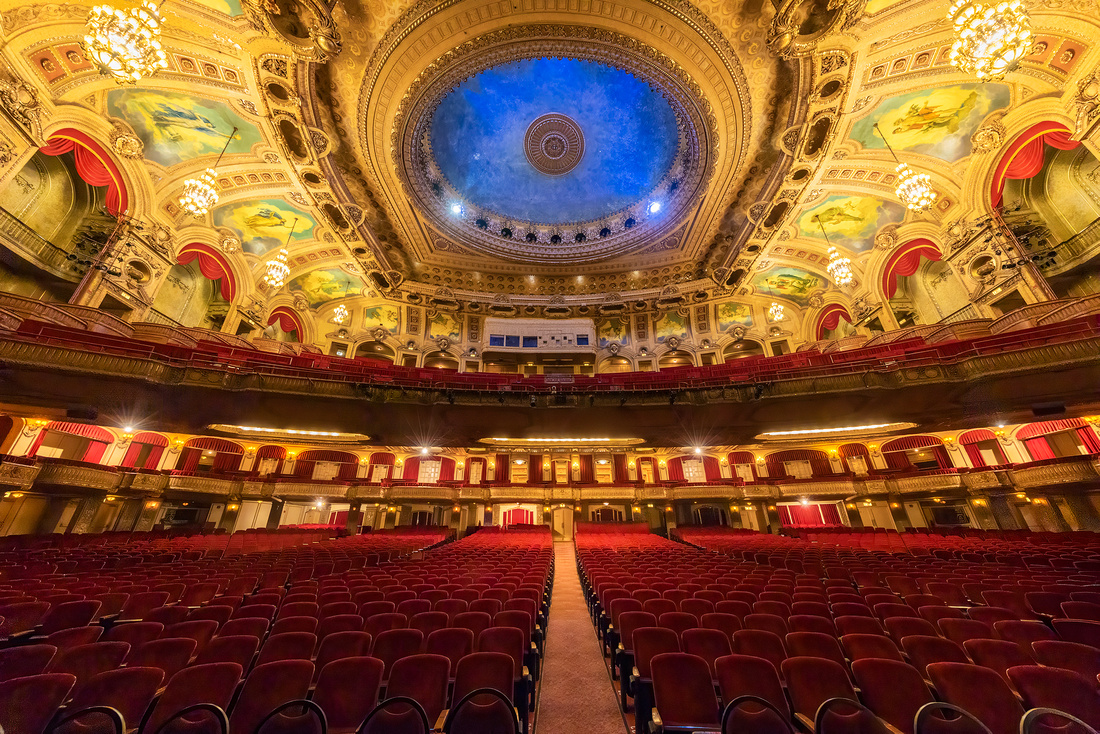

The Wonder Theatre of the World
We live in a world of relentless hype. “All sizzle and no steak” seems to be the norm. But there are exceptions.
In 1921, Abe and Barney Balaban, together with Sam and Morris Katz hyped their new downtown Chicago Theater as “the wonder theatre of the world.” 104 four years later, visitors still stand in awe of its grandeur.
A. J. Balaban and his brother-in-law Sam Katz founded the Balaban and Katz (B&K) theater corporation in 1916. Along with their brothers, they eventually owned 28 theaters in the city of Chicago and over 100 others in the Midwest. B&K operated them in conjunction with the Paramount Publix chain.
The Chicago Theater near the intersection of State and Lake Streets was planned as the flagship of their empire, and they spared no expense. Cornelius and George Rapp, renowned for their opulent movie palace designs, were the architects. The final construction cost was $4 million ($69 million in 2025 dollars)!
When it opened On October 26, 1921, the 3,880-seat theater was a frenzy of activity. Poet Carl Sandburg, reporting for the Chicago Tribune, wrote that mounted police were required for crowd control. Opening week featured First National Pictures The Sign on the Door starring Norma Talmadge.
Besides movies, other attractions included a 50-piece orchestra. A 26-rank Wurlitzer Theater organ featured the "Poet of the Organ," famed organist Jesse Crawford. B&K’s strategy of enticing movie patrons with a plush environment, top-notch service, and something new called air conditioning was copied nationwide.
By the 1970s, economic and social changes slowed business for the new owners, the Plitt chain. In a 1983 leap of faith by famous producer Lou Volpano, stage shows came to the Theater. According to Volpano, "When I first scouted the location, there were bullet holes in the picture sheet and they were showing Shaft, but it was so magnificent a venue I knew it'd be a hit."
For the next two years, stars such as Liza Minnelli, Steve Lawrence and Eydie Gormé, Bob Hope, and Sarah Vaughn graced the stage. In 1984, the Chicago Theater Preservation Group purchased the theater and adjoined Page Brothers Building for $11.5 million.
The group attempted to maintain the venue as a picture theater but failed. The doors closed on September 19, 1985. The last films screened there were American Ninja and Teen Wolf. Demolition was a possibility.
Fortunately, the Chicago Theater Preservation Group renovated the buildings in 1986 at a cost of $9 million. It was beautifully restored to its 1930s appearance with a seating capacity of 3,600.
The grand reopening on September 10, 1986, featured Frank Sinatra. Since then, countless stars have performed on its stage. The Theater is currently owned by New York's Madison Square Garden Entertainment, Inc.
The Shot
If you live in or visit Chicago, sign up for a tour of this majestic building to experience the golden age of movies. And it is a magnificent space to attend shows.
I recently toured the building with the Chicago Streets and Beyond photo Meetup group. I’ll let the pictures do the rest of the talking.


The marquee.


A peek through the staircase leading to the balcony.


A view from the balcony. Notice the “ghost light” on the left of the stage. A ghost light enables you to navigate the Theater to find the lighting control console and to avoid accidents. A popular theatrical superstition holds that every Theater has a ghost. The lamp is there to keep them away. The ghost light is often a union requirement.
.


The lobby ceiling.


A view of the lobby window from the second floor.


The B&K coat of arms. Pay attention to the yellow film stock at the bottom and the film reels forming a frame around the coat of arms.


The staircase to the balcony.


Backstage, there’s a tradition of performers signing and/or decorating the walls. You get one guess to name this artist.


One of my favorite entertainers, Carol Burnett.
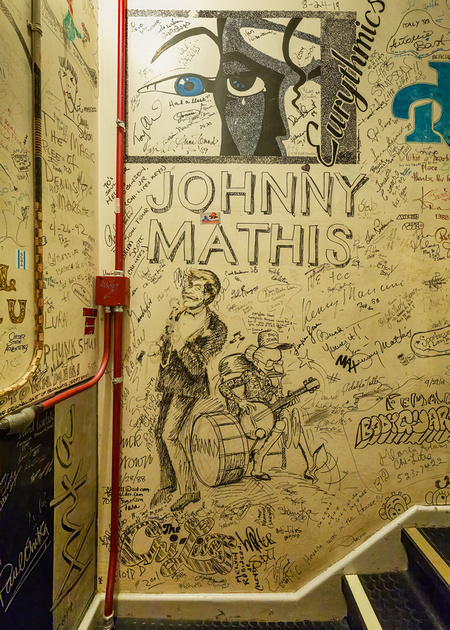

Johhny Mathis is still performing at age 89!


“Thanks Chicago” from Dean Martin and the Rat Pack
Thanks for looking,
Chuck Derus
My Close Call


Spring has the potential for ferocious storms. April 1-4 of this year was no exception. The southeastern United States was pummeled by torrential rain, high winds, damaging hail, and deadly tornadoes.
I signed up for a very last-minute storm chase and spent those days primarily in Tennessee, Arkansas, Louisiana, and Texas. Starting in Denver and ending in Oklahoma City, our group of eight drove 2,686 miles over four days pursuing supercells with tornadic potential.
Despite following numerous supercells with tornado warnings, funnels either never developed, were wrapped in rain and invisible, or occurred in the dark of night.
Our toughest day choosing a location was April 2 near Memphis, Tennessee. Conditions were favorable for violent storms with an astonishing 60% potential for tornadoes. Since there are very few Mississippi river crossings, our leader Roger Hill had to decide whether to chase in eastern Arkansas or western Tennessee.


Roger chose western Tennessee. There were several promising discrete storm cells forming there, while nothing was happening in eastern Arkansas. After chasing a half dozen supercells with tornado warnings that never produced, we called it quits after sunset.
The next day, we chased southwest Arkansas and northwest Louisiana. Storms formed southwest of us near Ida, Louisiana and a tornado warning was issued. But as they approached and crossed the front into wet, cool, stratus cloud-filled skies, they petered out.
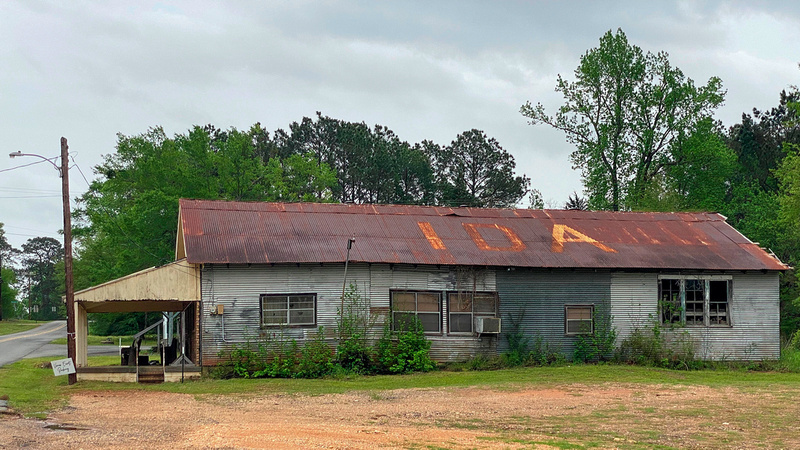

There’s not much in Ida, Louisiana.
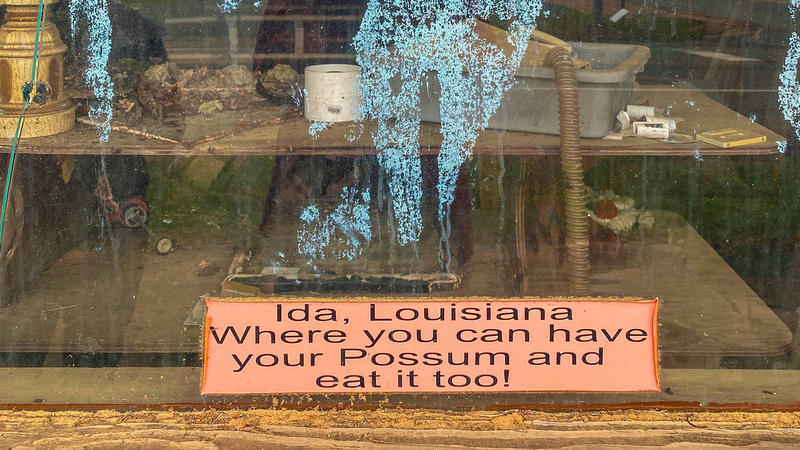

An interesting city promotion in Ida, Louisiana
On our last day, Roger had another difficult call between northeast Texas and the Little Rock, Arkansas area. The models looked better towards Little Rock to produce isolated supercells, so we sped in that direction.
Nearing Little Rock, several supercells emerged in northeast Texas, and we turned back around. We intercepted a violent supercell between Texarkana and Douglassville, Texas. A tornado was reported, but it was buried in heavy rain and invisible, so we kept our distance.
The Shot
Chasing in the southeast is challenging because of the trees and valleys. To be safe and to take pictures, you need an unobstructed horizon to see what’s coming.
Fortunately, we found a clear and rewarding view of a supercell at Wright Patman Lake near Texarkana, Texas. We piled out of the chase van to the shore. What a sight!
We stood looking directly into the inflow notch. The structure was breathtaking. A “stacked plates” rotating mesocyclone was glowing green from backlit rain and hail. The storm’s base with an extremely low wall cloud was to the right and partially shrouded by pouring rain.
And the electricity! We were treated to several minutes of spectacular cloud-to-ground lightning strikes. Just moments after this photograph was taken, lightning struck the lake directly behind us AND in the trees to the left of us.
It was past time to leave! I’ve never seen a van fill up that quickly.
Thanks for looking,
Chuck Derus
Waking Up Blurry
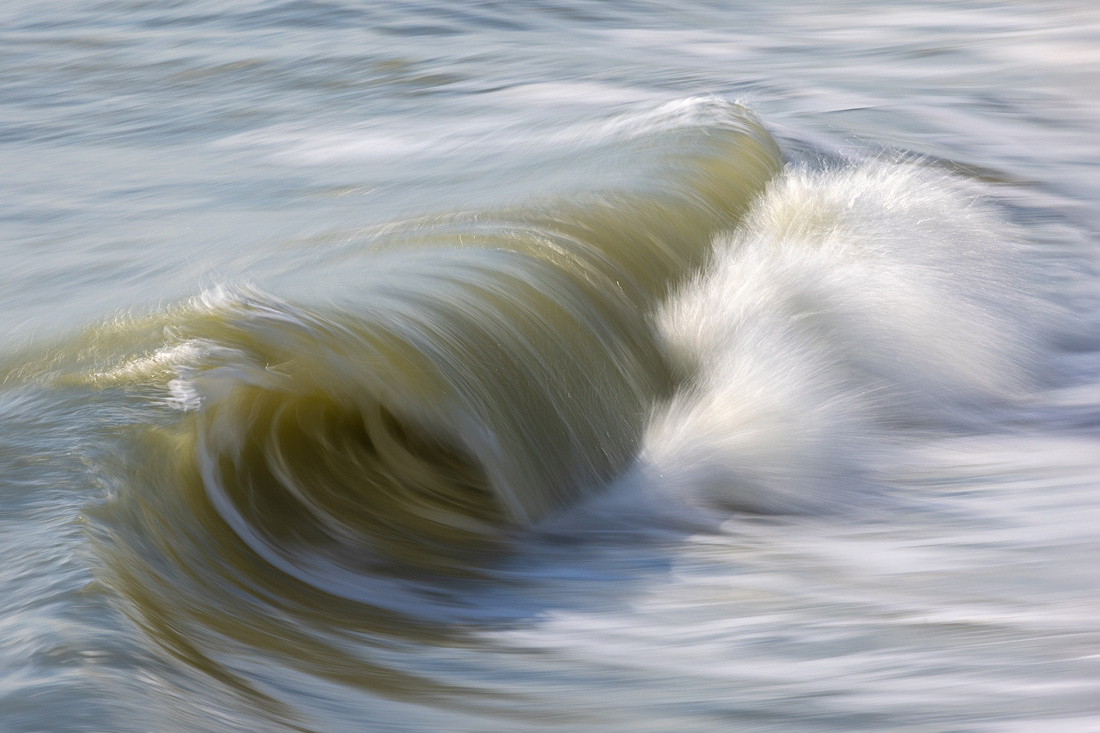

I tend to dislike photographs that aren’t sharp. But when done creatively, blurs can transform the familiar.
Our eyes have a “shutter speed” of approximately 1/30th of a second. One of the creative differences of a camera is the ability for shutter speeds to range from as short as 1/8000th of a second to as long as hours.
Intentional camera movement (ICM) takes advantage of this ability to manipulate the length of a captured moment. Camera movement while the shutter is open can present the familiar in a new light. Image points move during the exposure, creating streaks and blurs.
Moving Water
An ultra-fast shutter speed freezes every frenzied drop of crashing wave for all to see. As the shutter speed slows, detail begins to disappear until you are left with a silky indistinct blur. Shutter speed is an artistic choice in our interpretation of the scene.
Normally at slow shutter speeds, the camera is on a tripod. That way, stationary elements remain razor sharp and only what’s kinetic exhibits blur.
Off the tripod, what happens when you move the camera during a long exposure? That’s the magic of ICM. No two shots are ever alike. Minute changes in the subject’s motion, the direction of camera movement, and the choice of exposure time produce unpredictable and occasionally unpredictable results.
The Shot
Photographing Florida waves in the morning is incredibly easy. I simply roll out of bed and into my flip flops, shorts, and T-shirt. The nearby beaches are almost empty around dawn with just the sounds of the surf and smell of the ocean to keep me company.
I played with multiple slow shutter speeds and amounts/directions of ICM. No two waves and no two shots were identical. Out of thousands of images, a mere handful had the right amount of blur. This is one of them.
Thanks for looking,
Chuck Derus
Contest
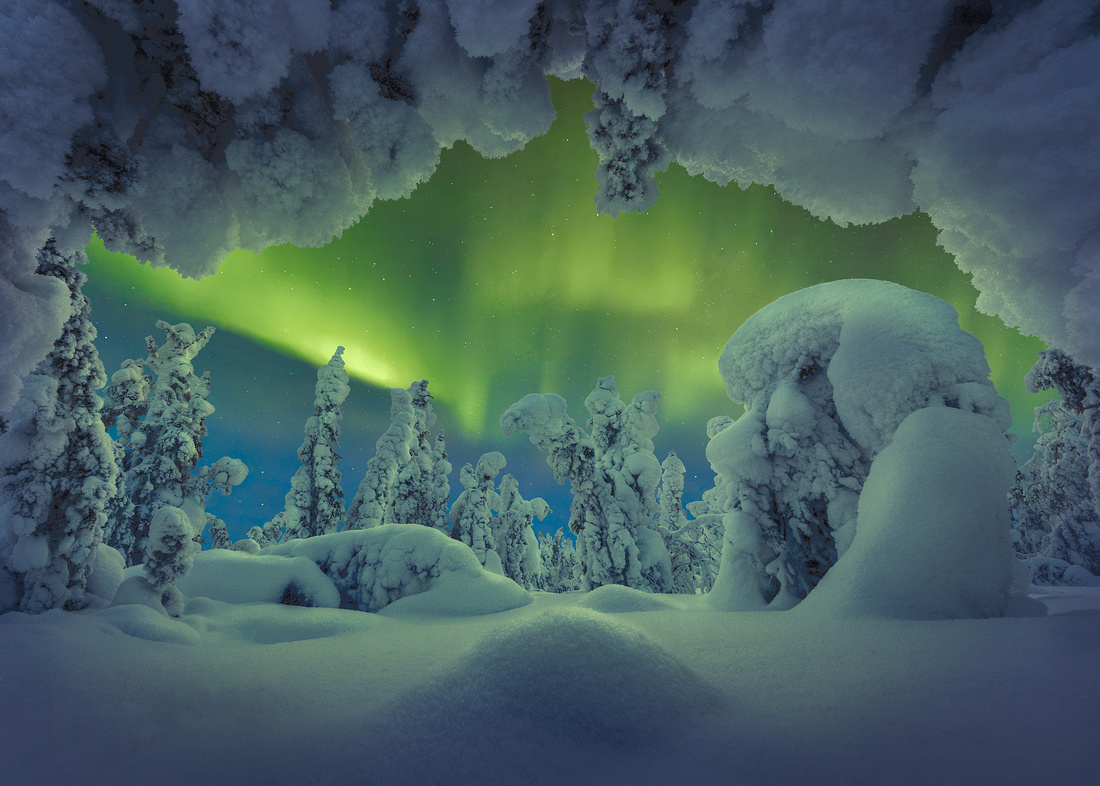

Photography is my hobby. It’s fun creating memories of the magnificent places and spectacular sights that I encounter. Also, I appreciate the challenge of learning and improving my skills. And I enjoy sharing images with folks that warm to my images and stories.
Winning awards is never my objective. Besides, professional photographers are just so much better at creating knockout landscape images.
Photographers like Gary Hart, Don Smith, Ian Plant, Marc Adamus, and Mark Metternich are in another league. Check out their websites if you are interested in what “good” truly looks like.
One of the two camera clubs I belong to includes competitions. Again, my primary reason for entering images is to share my work. In addition, a thoughtful critique is very much appreciated.
A month ago, I was invited by another local camera club to share lessons learned from 18 years of landscape photography. One of the questions afterwards was “Landscape photographs rarely win our camera club competitions because judges are drawn to birds and animals. Don’t you get discouraged when you rarely win?”
Not if you’re taking photographs for your own enjoyment!
The Contest
I usually delete emails about photo contests. But a few months ago, Ian Plant was promoting a Best of 2024 photo contest on his site.
Ian, along with the other four photographers referenced above, is one of the professionals that made an early impression on me. Ten years ago, I attended his Patagonia workshop and absorbed much photographic wisdom.
So, instead of deleting the email, I went through my best images of 2024 and submitted a couple of them. To my surprise, my image of the Northern Lights titled “Friday Night Lights” took second place!
If you’re interested, the announcement page is at Best of 2024 Contest Winners There’s a link on the page to a video where Ian and Taya Iv discuss the images and offer insights regarding their appeal and possible improvements. If you want to skip ahead to my image, it’s at 29:15.
The Shot
Readers with sharp memories will recognize this image from my January 10, 2024, Friday Photo. Wintertime blankets chaotic and distracting foreground details with beautifully simplistic snow. This makes the photographer’s goal of moving the viewer’s eye through the scene much easier.
The rime ice-covered trees bent towards each other creating a wonderful frame for the background leading the eye through the image. And the small mound of snow in the foreground was an unexpected bonus.
The image is a composite of a pre-dawn image of the foreground and an early evening image of the Northern Lights. Both were taken near Coldfoot, Alaska last February.
Thanks for looking,
Chuck Derus
Showing Up
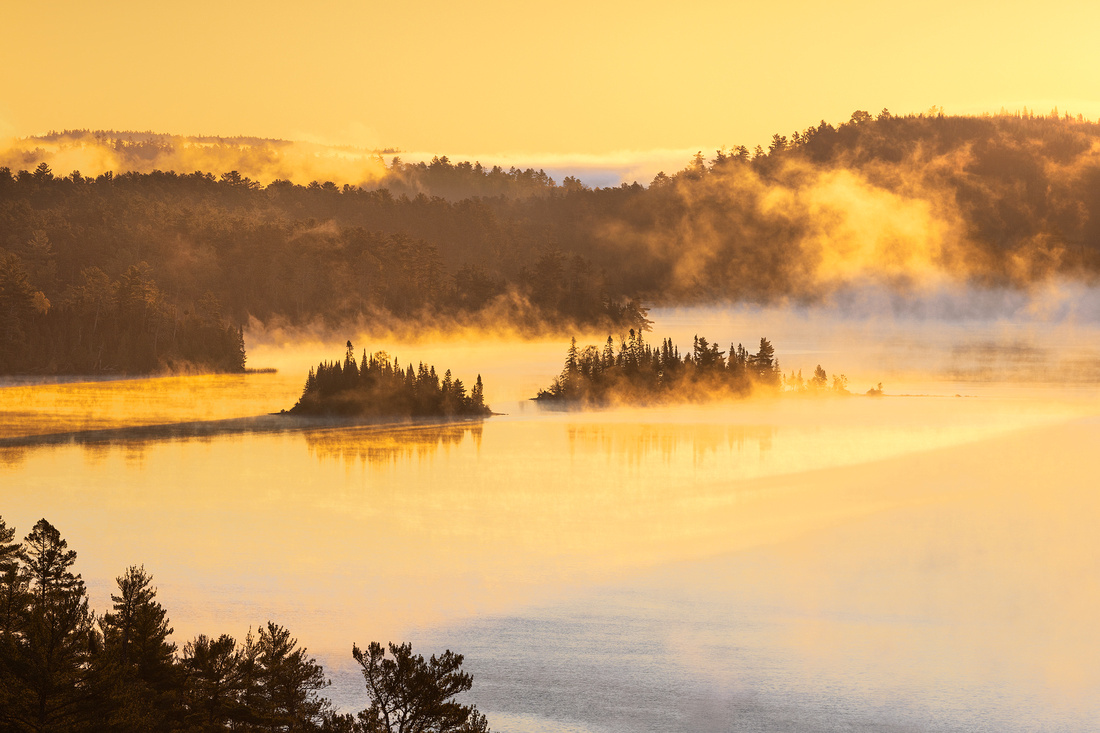

Showing up is 99% of the work. Photographer Bryan Hansel likes to say, “If you don’t show up, you’ll never take the photo.”
As my wife will attest, I’m not a morning person. But landscape photography demands rising early, driving to a location, and then hiking to be in position at least 45 minutes before sunrise when good light can begin to happen.
Sunsets are easier. Since good light can appear as late as 45 minutes past sunset, you need to stick around. Then you have to hike out and drive back to the hotel, where you set your alarm for an early wake-up call to repeat the process.
In the winter, long nights offer more hours for sleep between dawn and dusk. But in the summer, sleep is at a premium. After a few nights of sleeping only five hours, showing up requires commitment.
When you head out, you never know if it’s going to be worth the effort. While weather forecasts are increasingly accurate, the only way to know for sure is to show up.
The Caribou Rock Trailhead
This trailhead is located 23 miles north of Grand Marais, Minnesota. It takes about 20 minutes to hike this moderately uphill trail from the parking lot to West Bearskin Lake Overlook. Since the Overlook faces northeast, this is a sunrise photo opportunity.
West Bearskin Lake is located almost at the Canadian border in Minnesota’s Arrowhead region.
The Shot
The weather forecast didn’t look promising on the morning of October 4. “Severely clear” boring blue skies were predicted. But showing up is the work of photography.
So, our intrepid group of photographers rolled out of the sack at oh-dark-hundred to drive north. After an interesting hike in the dark guided by flashlight, we arrived at the overlook 45 minutes before sunrise.
At first, it appeared to be a bust. There were patches of fog, but the light and sky were anything but photogenic.
Suddenly, golden light bathed the landscape as the sun broke the horizon. For a few minutes, the sunlight danced with the fog creating a magical scene.
My go-to-lens is usually a wide-angle to capture an entire scene. This morning, two tiny islands over a mile away caught my attention. I switched to my telephoto lens and made them my subjects.
After the good light faded, we packed our gear and started down the trail to the parking lot. Along the way we met quite a few hikers asking about the view. While it was still pretty, it didn’t hold a candle to the gorgeous light we had witnessed earlier.


A wide-angle view as we left. Note the two tiny islands in the distance that are the subjects of my telephoto shot
Thanks for looking,
Chuck Derus